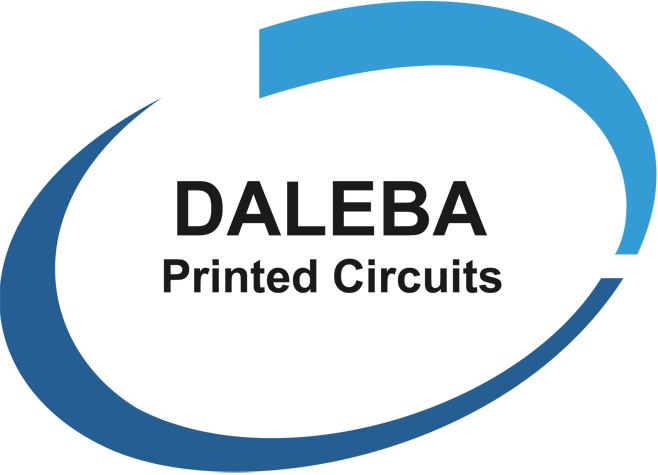When a PCB is designed several factors are considered; the PCB layout itself, the specification of materials, the laminates, inner layers and the board’s layer stack up. Engineers will however often not give as much consideration to the surface finish. Why is the PCB surface finish required? Bare copper on the PCB would oxidise which will compromise the components soldering. Which PCB finish should I choose? In general, the main considerations depend on required storage, the end application, the assembly process, the design of the PCB itself and of course the cost. A brief description of each is shown here. We would be pleased to help you further with any questions you may have regarding a suitable finish for your application.
OSP (Organic Solderability Preservative)
Usual thickness : 0.20-0.65µm
Shelf Life : 6 months
Unprotected copper will quickly oxidise which can cause soldering issues. OSP is a popular, low cost, environmentally friendly finish to prevent that oxidisation and provide an improved surface for solderability. OSP is suitable for multiple heat cycles during assembly process.
HASL – Lead Free Hot Air Solder Level. (Sometimes called LF HASL)
Usual thickness : 1 - 40µm
Shelf Life : 12 months
Involves dipping the PCB into a bath of molten solder so that all the copper is covered by solder. Excess solder is then removed by passing the PCB between hot air knives.
HASL is a relatively inexpensive process and provides excellent solderability. The process allows for multiple thermal cycles but it is not always suited to fine pitch SMD and BGA due to possible solder bridging. HASL is not suitable for ceramic circuits and Extreme Heavy Copper.
ENIG - Electroless Nickel Immersion Gold
Usual thickness :Nickel 3 - 6µm, Gold 0.05 - 0.125µm
Shelf Life : 12 months
With PCB designs incorporating finer lines and micro vias the flatness issue of Hot Air Solder Levelling (HASL) can be an issue. ENIG is a popular alternative finish for small components, fine pitch and BGA. ENIG is also wire bondable.
ENEPIG - Electroless Nickel Electroless Palladium Immersion Gold
Usual thickness :Nickel 3 – 6µm, Palladium is 0.05 – 0.3µm, Gold 0.05 – 0.125µm
Shelf Life : 12 months
ENIG can give ‘Black Pad’ concerns on BGA. Black Pad refers to nickel corrosion on electroless nickel and gold immersion, (ENIG). It can occur when joints come under pressure and break to leave behind exposed corroded nickel, hence the name Black Pad.
ENEPIG is an upgraded version of ENIG and can defeat the Black Pad issue.
Palladium is added between the electroless nickel and immersion gold, ENEPIG results in containing a thin layer for resistance whose thickness usually falls in the range from 0.05μm to 0.1μm. The Palladium layer helps stop the immersion gold from corroding the nickel layer. A higher thickness of palladium can limit the amount of gold that can be plated.
ENEPIG also has excellent wire bonding capability and reflow soldering capability.
EPAG - Electroless Palladium Autocatalytic Gold
Shelf Life : 12 months
EPAG Electroless Palladium Autocatalytic Gold is a new direct palladium surface finish process with an optional gold layer. It uses Auto-Catalytic Gold enabling a higher Gold thickness on the Electroless Palladium – so it can be used for more assembly techniques such as gold wire bonding as well as soldering therefore it is a more universal finish.
With no Nickel it is suitable for non-magnetic applications.
Features and benefits include:
- Capable of high-density circuitry
- Low temperature active steps to accommodate high frequency materials
- Offers planar surface for soldering
- Suitable for wire bonding of Au, Cu-Pd, Cu, Al, Ag
- Used with conductive adhesives
- Suitable for ceramics
- Thermo compression bonding
- Supports flex applications
- Improved high frequency performance
- Thickness < 0.2 µm allowing very fine L/S
Immersion Tin
Usual thickness :≥ 1.0µm
Shelf Life : 6 months
Immersion Tin offers excellent flatness making it ideal for small components, fine pitch, press fit technology and BGA. The process offers good solderability and a mid-range cost.
The main area of concern with the process are ‘tin whiskers’ and it is a aggressive to soldermasks meaning a larger than normal soldermask dam is needed. It is also is very sensitive to handling meaning gloves must be used.
Immersion Silver
Usual thickness :0.12 – 0.4µm
Shelf Life : 6 months
Silver has excellent conductivity and surface of silver is smooth and solderable, beneficial to signal transmission integrity. Like Tin, the flatness makes it ideal for small components, fine pitch and BGA. However, it is very sensitive to handling and can tarnish quickly meaning special packaging required and unused boards resealed quickly.
Hard Gold
Shelf Life : 12 months
Hard Gold is now a less common finish. This electroplating process tends to be used where either a very durable surface finish is required. Traditionally it was used for edge connectors where a wear resistant oxide free finish is required. Many customers now choose ENIG over Hard Gold.

